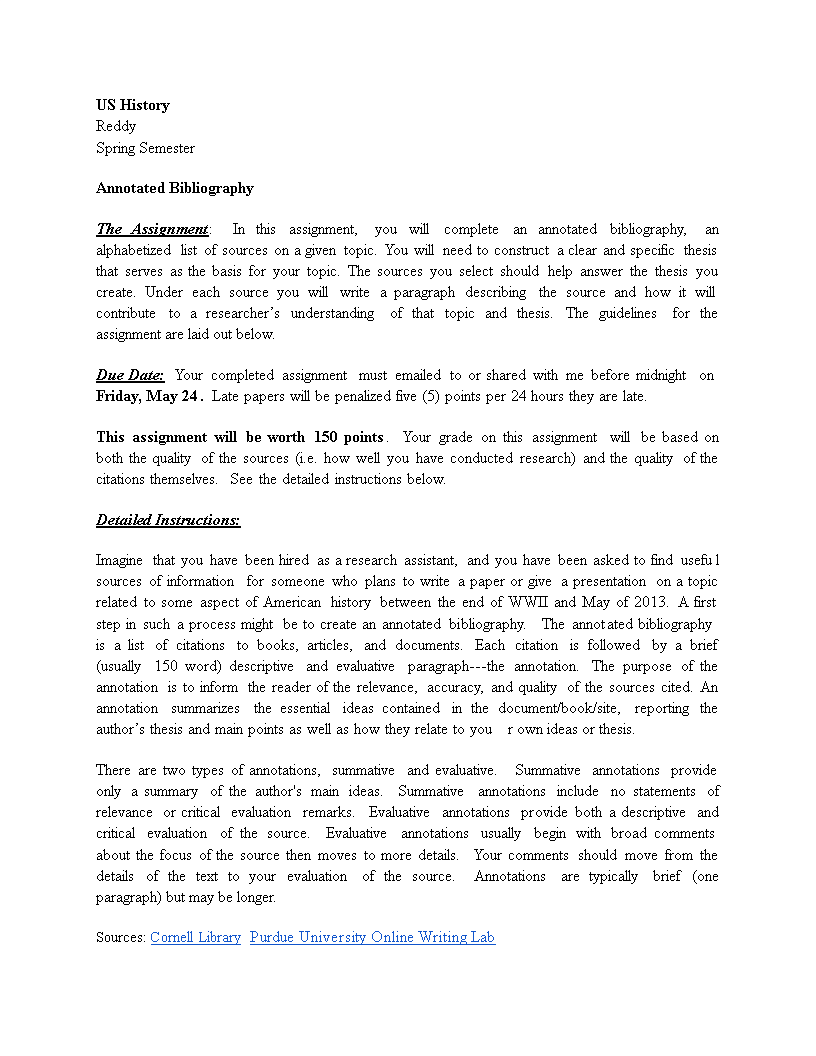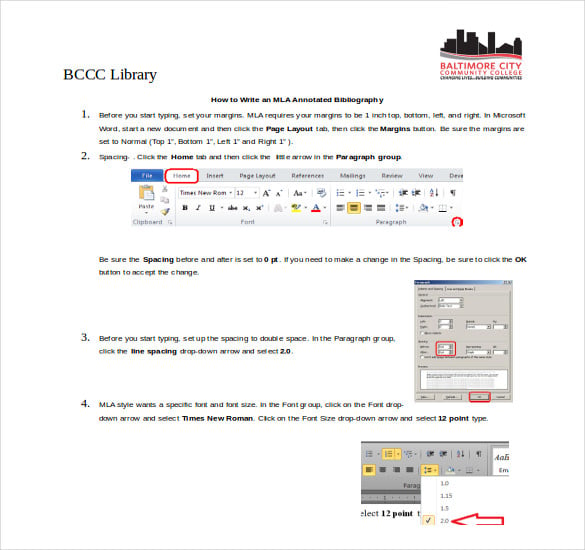

State the strengths and limitations of the text. Point out in what way the text relates to themes or concepts in your course. Discuss the relevance or usefulness of the text for your research. Highlight any special features of the text that were unique or helpful e.g. Identify any conclusions made by the author/s. Identify the research methods if applicable. Indicate the content or scope of the text. Indicate the background of the author(s). 
ANNOTATED BIBLIOGRAPHY MICROSOFT WORD FULL
Provide the full bibliographic citation. Contents of an annotated bibliographyĪn annotation may contain all or part of the following elements depending on the word limit and the content of the sources you are examining. Please also check with your lecturer about the elements each annotation should include. An annotated bibliography summary should be about 100 - 200 words per citation-check with your lecturer/tutor as this may vary between faculties and assessments. What does an annotated bibliography look like?Īn annotated bibliography starts with the bibliographic details of a source (the citation) followed by a brief annotation.Īs with a normal reference list or bibliography, an annotated bibliography is usually arranged alphabetically according to the author’s last name. Unless otherwise stipulated, you should write in full sentences using academic vocabulary. As you are addressing one text at a time, there is no need to cross reference or use in-text citations to support your annotation. Background materials and references to previous work by the same author usually are not included. Any information apparent in the title of the text or journal can be omitted from the annotation. As this is not an extended piece of writing, only mention significant and relevant details. Annotations should not extend beyond one paragraph unless otherwise stipulated in your assignment guidelines. Do not write too much-remember, you are writing a summary, not an essay. Which writing style should I use in the annotations? What are the essential or key texts on my topic? Am I finding them? Are the sources valuable or often referred to in other texts?. Am I being judicious in my selection of texts? Does each text relate to my research topic and assignment requirements?. What kind of material am I looking at and why? Am I looking for journal articles, reports, policies or primary historical data?. What question(s) am I exploring? Identify the aim of your literature research. Keep the following questions in mind to help clarify your choices. 
You need to consider carefully the texts that you select for your annotated bibliography.
explore and organise sources for further research. highlight sources that may be of interest to other readers and researchers. exemplify the scope of sources available-such as journals, books, web sites and magazine articles. demonstrate the quality and depth of reading that you have done. review the literature of a particular subject. When set as an assignment, an annotated bibliography allows you to get acquainted with the material available on a particular topic.ĭepending on your specific assignment, an annotated bibliography might: We strongly recommend that you also follow your assignment instructions and seek clarification from your lecturer/tutor if needed. Please note: the advice in this guide is general. While an annotation can be as brief as one sentence, the standard annotated bibliography consists of a citation followed by a short paragraph. Depending on your assignment, you may be asked to reflect, summarise, critique, evaluate or analyse the source.Īn annotated bibliography may be a component of a larger project or it may be a stand-alone assignment. The annotation usually contains a brief summary of content and a short analysis or evaluation. It is a list of research sources that includes concise descriptions and evaluations of each source. News & opportunities Expand menu for News & opportunitiesĪn annotated bibliography provides a brief account of the available research on a given topic. Campus Life Expand menu for Campus Life. Wellbeing & health Expand menu for Wellbeing & health. Support for Expand menu for Support for. Support & Development Expand menu for Support & Development. Forms & documents Expand menu for Forms & documents. Managing Your Program Expand menu for Managing Your Program. Getting Started Expand menu for Getting Started.










